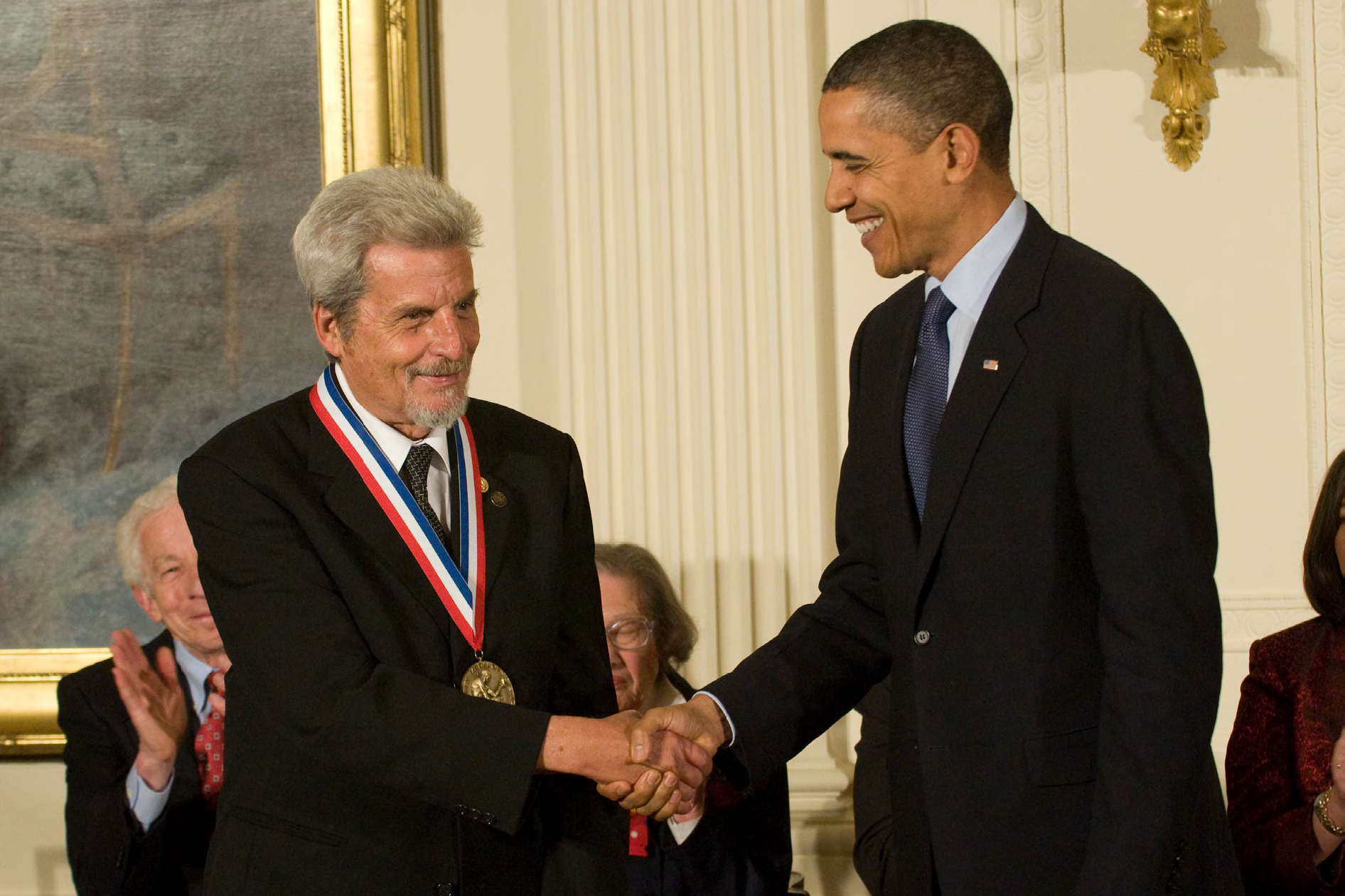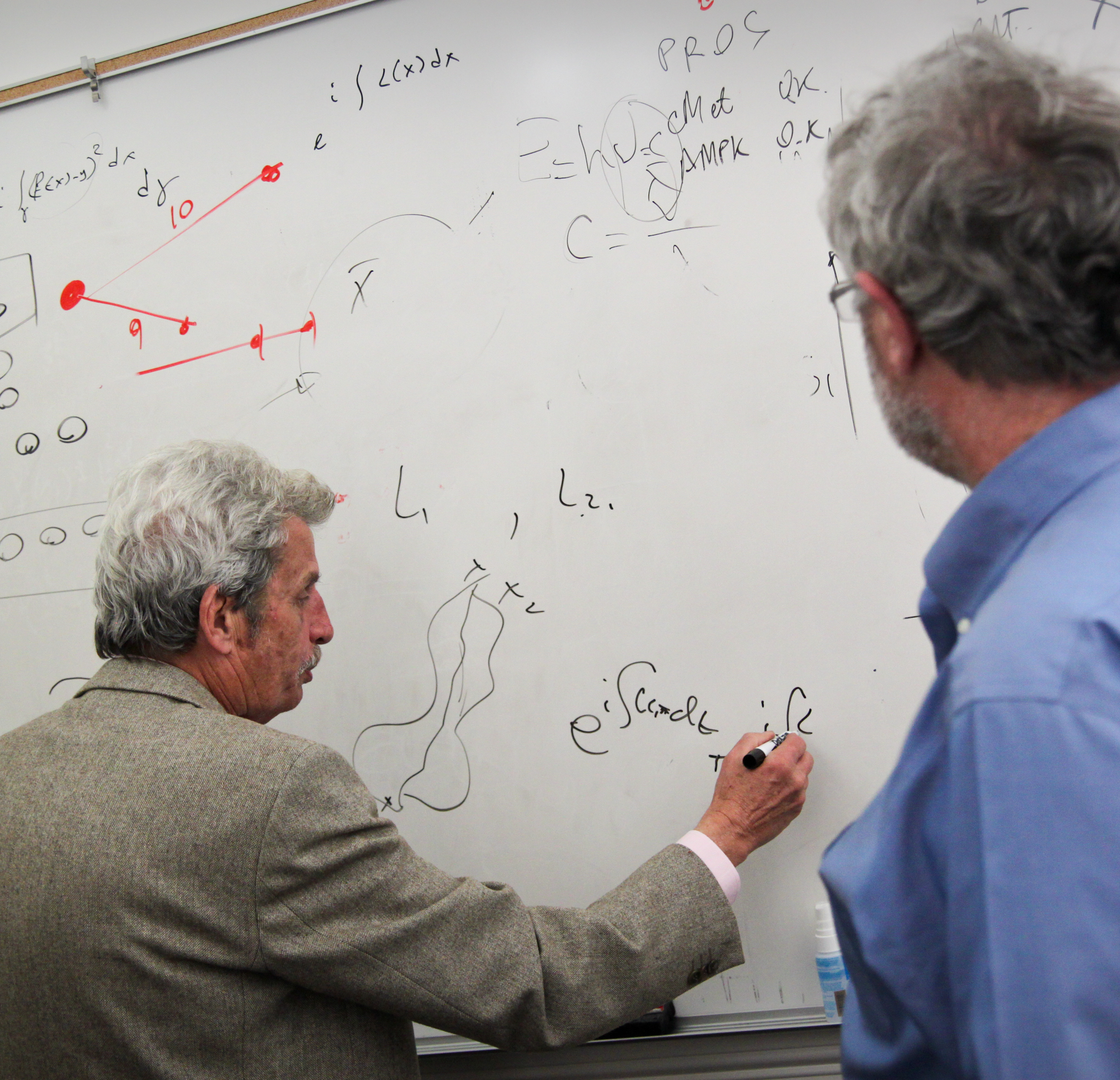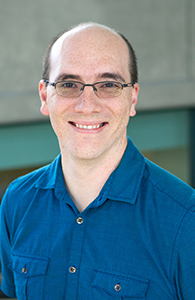The
Aharonov
Effect


Whether Collaborating with renowned colleagues or brainstorming on the fly, the award-winning physicist turns big ideas into quantum breakthroughs.
Yakir Aharonov never stops thinking – deeply, imaginatively, fearlessly – about the strange, rich and often shocking foundations of the universe. “I think in my sleep. I wake up with new answers every morning,” says the distinguished professor of theoretical physics and co-director of the Institute for Quantum Studies (IQS) at Chapman University. “Even while I’m talking to you right now, my mind continues to work on new ideas.”
It’s a sunny summer morning. Aharonov has made time for a phone interview as he and a group of internationally prominent colleagues finish breakfast and drive to Chapman’s campus in Orange for a day of lively quantum conversation. A National Medal of Science winner, Aharonov has discovered dozens of fundamental physics effects, changing the quantum landscape, igniting controversies and winning converts along the way.
Nobel Laureate and IQS member Sir Anthony Leggett, Ph.D., characterizes the work of Aharonov and the Institute as among the “major revolutions in the history of physics – and I mean really major revolutions like Copernicus, Galileo, Einstein.”
Yakir Aharonov never stops thinking – deeply, imaginatively, fearlessly – about the strange, rich and often shocking foundations of the universe.
Among Aharonov’s most significant discoveries: Time can flow backward. Subatomic particles are altered by distant forces. Blips of matter can be separated from their properties, much like Alice in Wonderland’s Cheshire Cat and its spooky grin. And two particles can – somehow – be linked across wide expanses of space.
Mind-bending concepts, all. But Aharonov’s amazing discoveries are routinely proved correct by experimental physicists. (“This isn’t airy-fairy philosophy – these are real experiments,” Arizona State University cosmologist Paul Davies, Ph.D, told Discover Magazine, admiringly, of Aharonov’s work.) And Aharonov’s ideas – particularly an important experimental technique called weak measurement -- are now deployed by other scientists every day to explore new corners of the quantum realm.
“Yakir is arguably one of the very best theoretical quantum physicists alive,” says Chapman President Daniele Struppa, Ph.D, a professor of mathematics. “His impact in physics has been tremendous. What is extraordinary about Yakir is the fact that he has built on his most famous work – the Aharonov-Bohm Effect of 1959 – to make more and more exciting discoveries. He has reformulated quantum mechanics in a totally novel way, thus offering a new way to predict the singular behavior of quantum systems.”
In general, physics research has yielded an array of societal benefits, from electricity to satellites and smartphones. Quantum theory provides a model of nature that explains how matter and energy behave at the atomic and subatomic levels. It has led to breakthroughs in electronics, lasers and computers.

“We’re finding that this is a good time and we are in a good positon to make rapid progress in a number of important areas, including quantum sensing, which has applications for radar and detecting small gravitational fields,” says Matthew Leifer, Ph.D., co-director of the Institute for Quantum Studies.
Thanks to his quantum contributions, the 87-year-old Aharonov, with a mop of silver-white hair and a penchant for cigars and punchline stories, has been short-listed for the Nobel Prize. That’s in addition to receiving the National Medal of Science in 2010 from President Barack Obama, who called him “one of the most influential figures in modern physics.” What’s more, Aharonov was elected to the prestigious National Academy of Sciences and was awarded the Wolf Prize in Physics, one of the most prestigious honors in the field. Aharonov’s full list of awards includes the Weizmann Prize, the Rothschild Award, the Israel Prize in Physics and the Hewlett-Packard Europhysics Prize.
Aharonov is so well known in his native Israel that the influential national newspaper Haaretz wishes him well on his birthday, Aug. 28. And some of his more than 200 published papers have been covered by popular-science magazines and daily newspapers, including Discover Magazine, New Scientist, Scientific American, The Wall Street Journal and USA Today. “Yakir has been making important discoveries for the last 65 years,” says Jeff Tollaksen, Ph.D, founder and co-director of the IQS. “People keep saying, ‘Oh come on, that one can’t be true,’ but his many discoveries have been verified in experiments over and over again. I don’t know of any other scientist with that kind of track record, especially one who’s asking the really big questions the way Yakir is. His team just keeps hitting home runs.”
LABORATORY OF THE MIND
At Chapman, Aharonov’s influence is stretching further and further into the quantum world – and far into the future. He’s teaching a new generation of physicists at the Institute for Quantum Studies, and he collaborates with leading scientists from Chapman and around the globe.
“Thirteen years ago, Chapman had no physics department. Today we have a department, the institute and we have attracted incredible faculty, visiting professors from around the world and students – undergraduates, graduate students and post-docs – because of Yakir,” Struppa said. “His influence extends beyond physics. Dr. Amir Raz became interested in Chapman after talking with Yakir. He founded the university’s new Institute for Interdisciplinary Brain and Behavioral Sciences as a result.”
In addition, Aharonov’s big ideas have the potential for real-world applications such as powerful quantum computers, super-sensitive sensors, stronger lasers and microscopes capable of discerning some of the universe’s tiniest objects. “Laboratories are using his ideas and developing new technologies with them,” Struppa says.
Formerly a professor of physics at Tel Aviv University, the University of South Carolina and George Mason University, Aharonov joined the Chapman faculty in 2008. “I’ve found complete freedom to do whatever I like in physics and have people around me to discuss it with – including Jeff Tollaksen and Daniele Struppa,” he says. “I have a lot of encouragement to think about my foundational work. And through the Institute, I can share my ideas with scientists from all over the world. We are making exciting new discoveries all the time. This drives me to keep going.”

July’s informal gathering of major physicists included Sandu Popescu, Ph.D., a pioneer of quantum information. “We brainstorm 20 hours a day for two weeks,” Tollaksen says. “It’s a very creative time.”
In the room there’s always the theorist’s must-have equipment – a chalk board, which is preferable to a white board because it’s easier to erase, Tollaksen notes. “But we are not immersed in equations and numbers alone,” he says. “Yakir’s method is conducting thought experiments – the Gedankenexperiments famously used by Albert Einstein.”
Aharonov used the technique extensively as a graduate student at the University of Bristol, England, where his advisor was the renowned theoretical physicist David Bohm, who had worked closely with Einstein. “Gedankenexperiments are the gold standard for making new discoveries,” Tollaksen explains. “We focus on a paradox, a point where two existing theories intersect but don’t seem to fit together. We use our intuition to come up with new ideas that are provable. The technique has fallen out of practice in science. One of our missions is to re-introduce it at Chapman and more widely. We believe this method can serve as a paradigm for teaching in general.”
We are making exciting new discoveries all the time. This drives me to keep going Yakir Aharonov, PH.D.
Over more than 65 years of research, Gedankenexperiments have yielded many important new discoveries for Aharonov. One of the most significant is the Aharonov-Bohm Effect, which found that particles can be affected by forces located far away. It’s hailed as one of the major quantum theory discoveries of the second half of the 20th century. Other complex discoveries named for Yakir and his collaborators include The Aharonov-Casher Effect (1984), the Aharonov-Anandan Geometric Phase (1987) and the Quantum Random Walk (1993).
THESE THEORIES AND IDEAS HAVE CAPTURED THE PUBLIC IMAGINATION AND CONTINUE TO INFLUENCE PHYSICS:
- Two-Way Time
- Weak measurement
- The Cheshire Cat
- Quantum Pigeons
- Superoscillation
Two-Way Time
In a 1964 paper, Aharonov and colleagues showed that the future reaches back in time and meddles with the past. “We looked at two atoms, identical at the beginning but different at the end of the experiment,” Aharonov notes. “We theorized that the future tells us something new about the system earlier in time even if you can only find out that difference later in time.”
BACK TO THE FUTURE?
Meanwhile, in the car headed for Chapman on that summer morning, Aharonov is talking about the past, the present and the future. “I’ve been thinking big questions about time and the universe since I was a child, as all children do. I just never stopped, and my parents encouraged my work,” he says. Now, he finds himself turning more often to a question on the human scale. “If effects from the future determine what I do in the present, such as in the movie ‘Back to the Future,’ do I have free will?” he asks. “I believe we do. Nature protects freedom of choice. Einstein was troubled by the uncertainty he saw in physics and said God doesn’t play dice with the universe. I’ve asked instead why God would play dice – what is gained? We’re finding this uncertainty is what protects free will. Freedom of choice is at the core of things.”
THE QUANTUM REVOLUTION: A NEW ʻSPACE RACEʼ IN DATA PROCESSING? By Dennis Arp

Justin Dressel doesn’t exactly fit the profile of a revolutionary. But make no mistake, he wants Chapman University at the front lines of an emerging battleground in quantum technology. That’s because research in this realm could transform information processing, affecting critical areas of the economy and national security.
Recent reports detail China’s ambitions for global leadership in quantum technology. A new “space race” is developing, and the United States is at risk of falling behind.
“If the potential of this technology is realized and we aren’t leading the charge as a nation, it could have disastrous consequences for data security and the tech sector,” says Dressel, Ph.D., associate professor and program director for the physics faculty at Chapman.
Congress is concerned enough that in December 2018 it funded the National Quantum Initiative (NQI), seeking to empower academic and industry research partnerships – “to bring us out of our caves to more explicitly work together,” Dressel says.
Chapman is partnering with other Southern California institutions in hopes of answering this call to collaborate.
Where Theory Meets Application
Dressel’s contribution is particularly important because his research straddles the worlds of quantum theory and experimentation.
“Each group speaks a different language, so a certain amount of translation is required,” Dressel says. “I speak both languages, which greases the wheels for productive collaboration.”
The working group, known for now as Quantum LA, includes schools such as USC, UCLA and Caltech. If the collaborative lands National Science Foundation funding, it will become one of just five or six such NSF-funded NQI centers nationally, Dressel says.
Many hurdles remain, but the initiative’s goal is clear: to fully explore the potential of quantum technology to revolutionize communication, sensing and computing. This is a critical time, Dressel notes, because the speed of conventional computation has started to plateau.
“We’ve miniaturized to the point where we can’t go much smaller – computer processors and transistors are bumping up against atomic scale,” he says. “We have to use the entire theory of quantum mechanics, not the simplified version we’ve used up to this point.”
Quantum computing offers the potential for previously unattainable speed and for solving vexing problems, like simulating the structure of complex molecules. At the same time, quantum communication could reshape the world of data security.
“What happens if a country can hack into any other government on the planet?” Dressel asks. “We had better be the first to develop counter technologies.”
